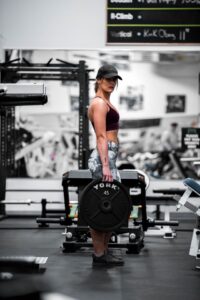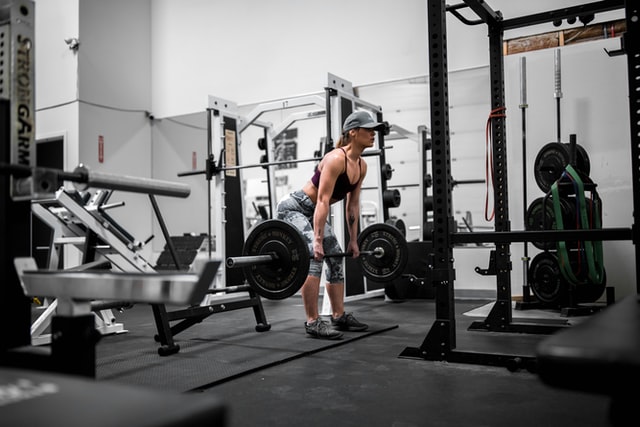After unusual physical exertion, every movement responds with pain. We understand the intricacies of physiology.
One day, a colleague tried so hard in her first CrossFit class that the next morning she had a fever and was unable to move because of the intense pain. I had to resort to medical care, relieve pain with medicines and take sick leave. This, of course, is an individual reaction of the body, and a very strong one at that. Ideally, after class, only pleasant fatigue should remain.
The unpleasant painful sensations that appear after the gym even have their term – creature, a syndrome of delayed muscle pain. It appears after the first workout or with a load exceeding the usual volume, it is not felt immediately, but within two days and has a different degree of intensity. The athlete understands which muscles he has “worked” well when, when moving, they remind of themselves with aching pain. However, many people mistakenly believe that such pain is a sign of quality training and increased muscle growth. But this is primarily a sign of microtrauma and inflammation.
Why is this happening?
Until recently, it was believed that lactic acid (lactate) was to blame. Its level in the blood depends on the intensity of the exercise. The greater the load, the more lactic acid is produced, which makes it difficult for nerve conduction and muscle contraction. Therefore, a burning sensation is felt in the muscles, it becomes difficult to perform repetitions. The extreme degree of “acidification” is the inability to make a movement. The breakdown products of lactate are removed from the cells 20-30 minutes after exercise.
Now experts are inclined to believe that lactic acid is not the only metabolic product, but the muscle pain is affected by micro-ruptures of muscle fibers, ruptures of the filamentous structures of myofibrils, the release of free radicals, local inflammation, and as a result, the development of various biochemical processes that seek to save the body from damage. fabrics. Water-salt imbalance can affect well-being: during exercise, the ratio of electrolytes and fluid changes. Salts are excreted with sweat and breathing.
Newcomers to gyms are especially susceptible to the creature. The manifestation of mild pain during movement is a characteristic phenomenon and should pass within 72 hours after class. In the future, the body adapts to the loads, pain may appear when changing the training plan.
But physical discomfort may also indicate an injury or sprain. This is a stronger sharp pain that appeared during the exercise or after the lesson, and further loading becomes impossible. In such cases, you need to seek medical help from a specialist.

How do minimize pain?
- During training, do not forget about the drinking regime – water does not thicken the blood, supplies nutrients and oxygen, and improves the permeability of nerve impulses to muscle fibers.
- Sports activities should be started rested, and full of energy. Sleep for at least 8 hours, and after pumping the muscles even more – then the recovery period will be easy.
- With regular physical activity, you need to make sure that the menu has a sufficient amount of protein – 2-2.5 g per 1 kg of weight.
- You can not quit classes with muscle discomfort after exercise. Usually, 2-4 days is enough for the body to return to its shape. And for the next lesson, you need to choose the right load, lightened, this will help to “pour” the muscles with blood and speed up recovery.
- Among the prevention of muscle pain after exercise – is a hot shower, bath, or sauna. Under the action of hot air, blood flow is accelerated, and toxins are eliminated faster.
- A good massage with warming ointments will not only relieve pain but also help get rid of water accumulated in the cells.
- Choose high-quality knitwear for sports. From sprains, injuries, compression things help to protect yourself – tights or whole sets.
- There is an opinion that cherry juice or a glass of unsweetened coffee makes you feel better after a workout.

Prevention of muscle pain
- Sports activities should be regular and preferably under the supervision of a specialist who will select an adequate load for your physical form, age, and health. And control the technique of strength exercises.
- You can’t “set records” in the first lesson, and then not show up in the hall for two weeks. That’s right – go to the goal in small steps, gradually increasing the time and volume of the load. Then our naturally lazy body will quickly adapt to the load and get used to the sport.
- Every workout should start with a good warm-up. This is a set of exercises to prepare for a load of muscles, joints, and ligaments. Experienced athletes never start training without a warm-up, which cannot be said about beginners.
- You need to finish your workout with a hitch – it is just as important for the body as a warm-up. After an intense main part, the body must restore breathing, and blood circulation and relax the muscles. During training, all body systems work in an enhanced mode, blood flows to the organs under high pressure, and muscles increase in volume. A 10-minute hitch, consisting of cardio and stretching, helps to return the body to its usual mode, stretch the muscles, make them smoother and reduce pain.

